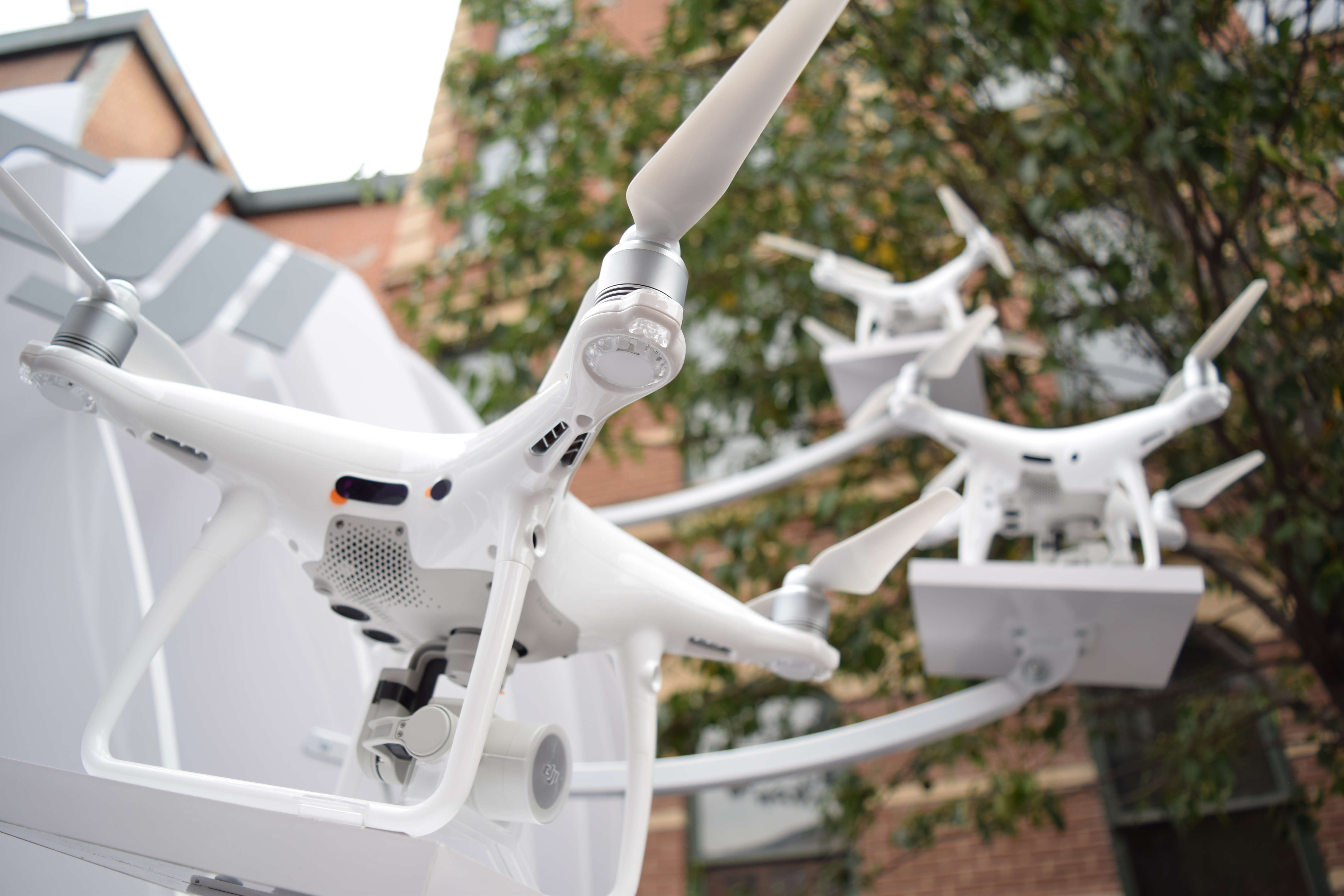
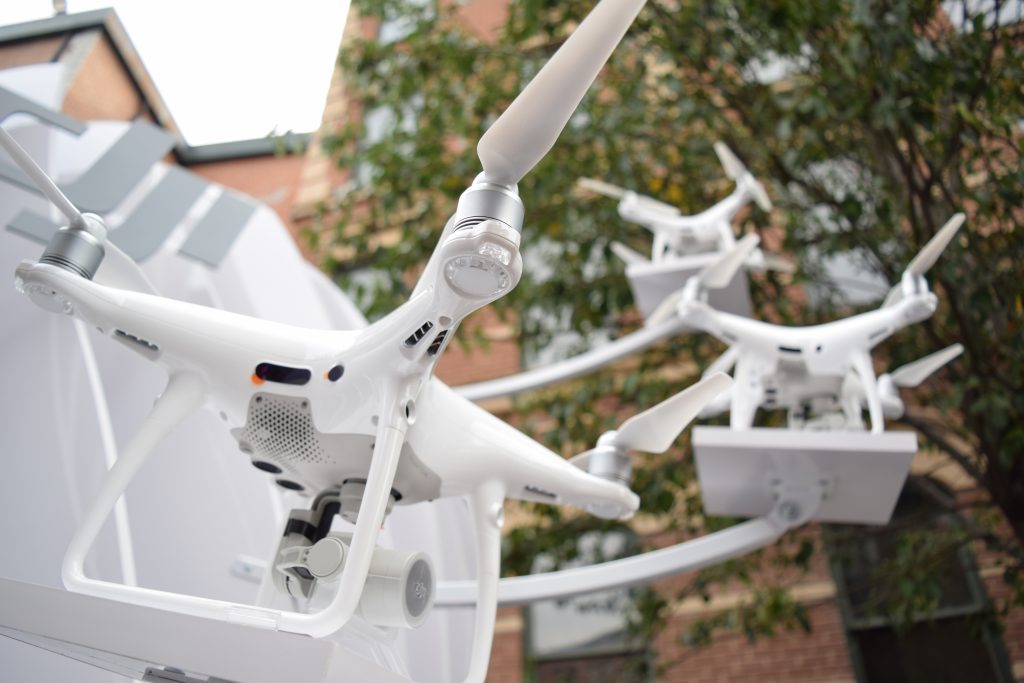
Hot on the heels of their most raved-about drone yet, the Mavic Pro, DJI today announced the latest refreshes in two of their most popular drone lines: the Phantom 4 Pro (also released in a Phantom 4 Pro+ model) and the Inspire 2.
The press event this morning was held in a Warner Bros. back lot in Burbank, CA, home to film and TV production. This location was no accident. It was an overt testament as to the use and quality of the drone pioneer’s products in a time when their competition is literally falling from the sky (cough, GoPro).
But this wasn’t just a PR stunt. As the live demo of both products proved the video quality remains unmatched after generations of drones have been refining aerial videography. The clear focus for both these machines is on maximizing professional capabilities and empowering creativity with revamps to the photo/video hardware, physical design, and further improving the user interface for ease of use.
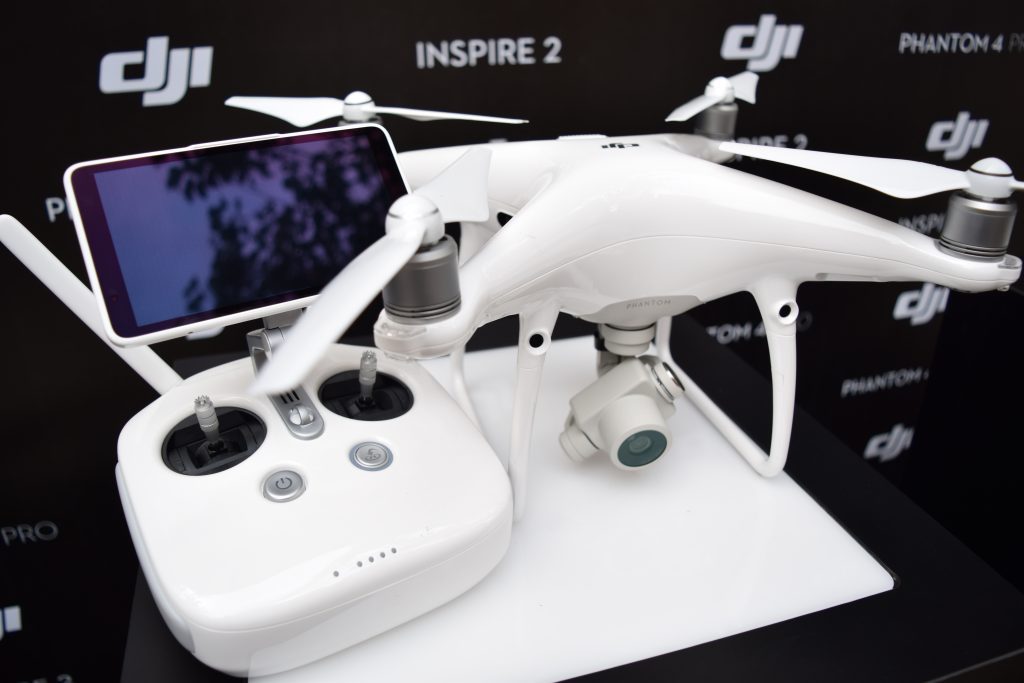
DJI Phantom 4 Pro
While the upgrades to the Phantom 4 Pro take it well beyond what one might traditionally need for hobby use, they also keep it super accessible. The new Pro version features an amped-up intelligent flight system, an increased number of sensors, and range which ensures that the pilot has just as much control as they want, with the protection to focus on capturing the perfect shot. The range has been increased to 4.3 miles, up from the 3.1 miles on the Phantom 4. Side-mounted infrared sensors deliver 21 feet of obstacle awareness, as well as both dual forward and rear stereo vision sensors for acute 5-directional environment processing. This comes into use in close quarters, where the drone can detect obstacles from 98 feet in front of the flight path and deliver 360° of protection.
Intelligent Flight
New flight features build on previous modes, with Draw being the flashiest of them all. While in this mode, the altitude is locked and the flight path is dictated by the path that the pilot traces on the remote screen, which allows the pilot to capture advanced angle shots while controlling the other camera features. The Standard subset in this mode sends the drone along the directed path at a consistent speed with the camera facing forward, while the Free setting only proceeds along the route when instructed. The Free setting also allows the camera to be positioned in any direction, and repositioned in-flight.
The updates to ActiveTrack mode now allow for different locking positions on a moving target for multiple angles. Trace locks onto the subject either from ahead or behind, incorporating obstacle avoidance, while Profile targets a side view. Spotlight keeps the camera locked onto the moving subject, giving the pilot the ability to maneuver around for dynamic shots. This was one minor weakness I noticed in the Phantom 4’s program for this feature, which seems to be addressed here.
TapFly also gets an upgrade in the Phantom 4 Pro, with 3 sub-modes: Forward, Backward (flies backwards in the opposite direction of the tap), and Free, which locks the forward direction of the drone without locking the camera in a specific direction.
The current Return to Home function also gets an upgrade in the new iteration, with flight path recording from the moment of takeoff to use for comparison on the return journey home. Not only does this ensure that the same route is followed during the flight back home, but if control signal is lost it enables a “flight mapping” to stay the course.
A mode that wasn’t touched on much was the Gesture Mode, which allows users to make signals with their arms to the drone, activating recognition software that centers the subject in frame and starts a three second camera countdown. I suspect that this would be the least-used mode, since it seems it would be easier to take selfies in the ActiveTrack mode and manually hit the shutter button.
Buy DJI Phantom 4 Pro for $1,499
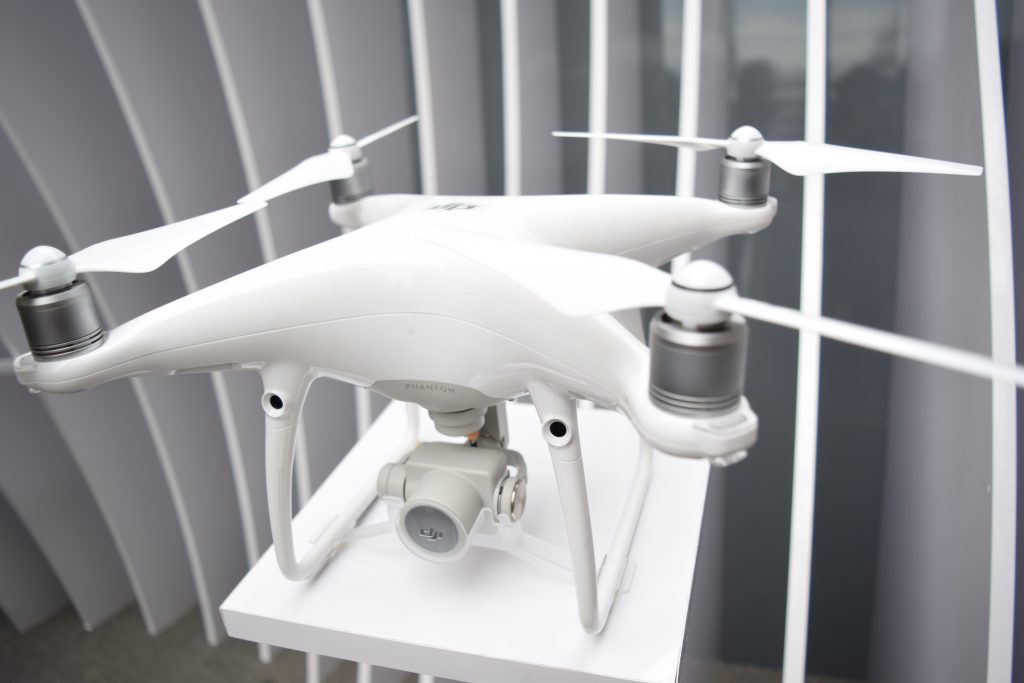
Imaging upgrades
When it comes to the photography capabilities of the new drone, they are bountiful. The powerful camera has been boosted with a mechanical shutter and 1” imaging sensor with 11.6 stops and f-stops from 2.8-11. This allows for more challenging shots and greater depth of clarity, while creating a greater pixel density. Speaking of pixels, the new sensor enables 20MP RAW stills that push the quality into the ranks of professional handheld cameras.
The videography got a massive bump too, with H.264 4K footage at 60fps at 100Mbps bitrate, or H.265 4K footage at 30fps, also at a 100Mbps bitrate.
With all the upgrades to the imaging aspect of the Phantom 4, I would be remiss if I didn’t mention that the Phantom 4 Pro+ includes a remote that has a built-in 5.5” 1080p screen with 1,000 nit brightness that keeps its visibility even in bright light (most mobile devices are in the 400-700 nit range). This also eliminates the need for you to burn out your mobile battery on a 30 minute flight, while reducing lag. The new controllers also allow pilots to choose between 2.4 & 5.8 Ghz frequencies, or enable automatic smart sensing to choose the lowest level of interference for cleaner video feeds. Both remotes also have a built-in SD card slot, so you can record direct to the removable memory without needing to retrieve the drone to swap cards.
Buy DJI Phantom 4 Pro+ for $1,799
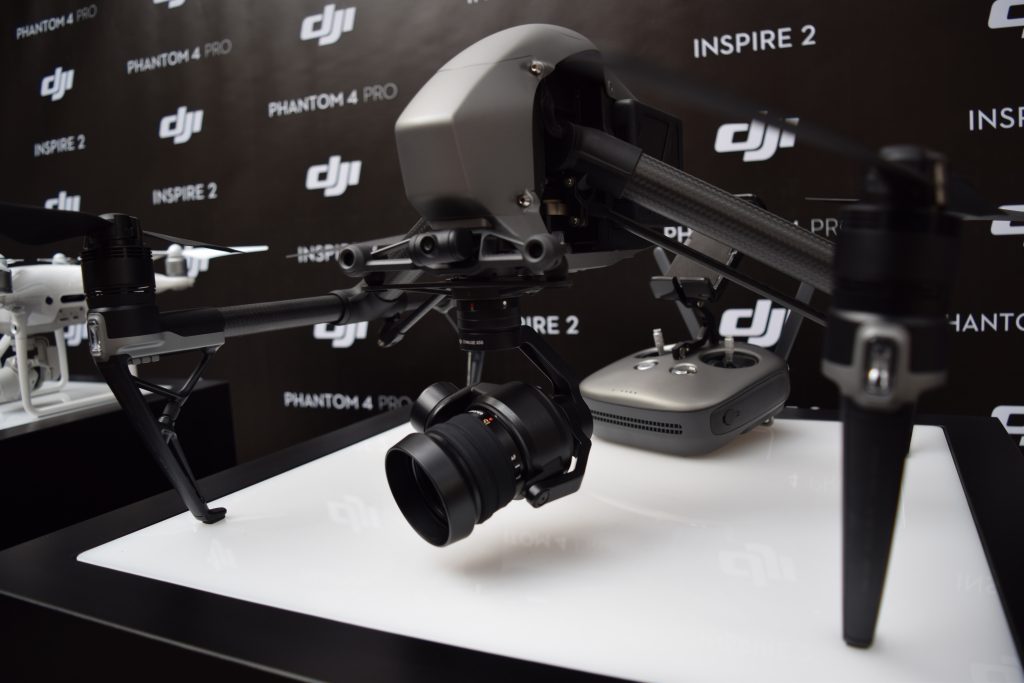
DJI Inspire 2
If the Phantom 4 Pro sounds like more camera than you are capable of handling, then brace yourself for the Inspire 2. During the demo DJI live-streamed a bank robbery scene shot on the Inspire 2 in the back lot, and it was Hollywood grade right out of the gate. This platform has been used by professional cinematographers, and many of the upgrades made to this new iteration are a direct result of the requests that DJI had from pro users.
I cannot overstate the quality of the video feed enough. Simply put, it is astounding and makes you forget it comes from a drone. The smoothness of the transition between shadows to highlights, the preservation of depth, and the difficult shots it can pull off go beyond any drone cameras before.
Flight performance
The Inspire 2 can now speed through the skies at a blazing 67mph, with 0-50mph in 4 seconds. For reference, the 2012 Aston Martin Vanquish 5.9 V12 does 0-60 in the same time. Yeah, that fast.
The new beast features a completely redesigned structure from the Inspire 1. In fact, not a single piece on the Inspire 2 was reused from the previous model, and the design goal was to slash weight while increasing the strength and function. Part of the new design features a magnesium alloy shell, and carbon fiber arms supporting the 15” propellers. Those props are powered by dual hot-swappable batteries with a power redundancy, which allow for 27 minutes of flight time.
The maneuverability of the Inspire 2 has been drastically increased, with a 60 ft/ sec descent speed, while boasting a 19.7 ft/sec ascent speed. The obstacle-sensing depth has a wide range of 2.3-98.4 feet, with included upwards infrared sensors for agility in tight spaces from 0-16.4 feet.
Buy DJI Inspire 2 combo for $5,999
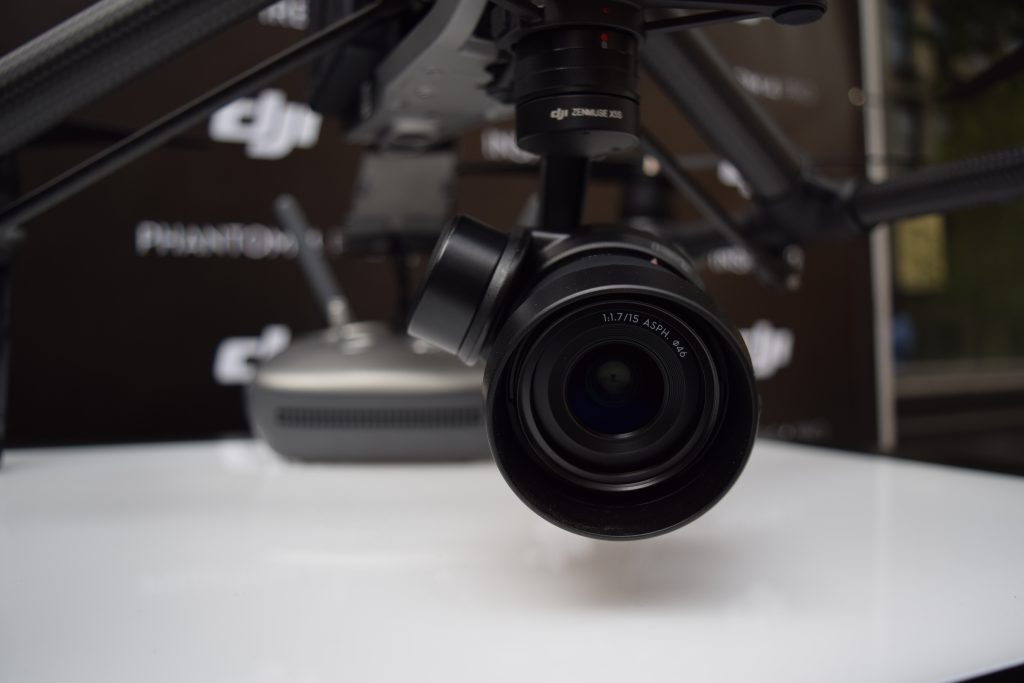
Camera capabilities
The Inspire 2 comes with either the ZENMUSE X4S or X5S cameras, both of which are detachable. The X5S packs a 20.8MP camera with the latest micro 4/3 sensor, capable of 4K at 60fps or (wait for it) 5.2K at 30fps at 4.2Gbps. With quality that robust you will need a beefed up PC and monitor combo to handle the awesomeness. The dynamic range is 12.8 stops, with 8 lenses from 9-45mm, capable of taking 20MP RAW photos at 20fps in constant burst mode.
The X4S is only the slightest bit tamer, with a 1” sensor pushing 20MP and a dynamic range of 11.6 stops. The video is the same as the Phantom 4 Pro specs, with H.264 4K footage at 60fps, or H.265 4K footage at 30fps, both at a 100Mbps.
All that data-heavy content needs to be stored somewhere, so DJI has added an integrated CINESSD. It features 4 PCI Express ports and supports FAT32/exFAT file formats, available in both 120GB and 480GB.
The Inspire 2 features a dedicated FPV front-facing camera, along with dual-operator mode which allows a master and slave remote to independently control the flight from the camera gimbal assembly. The range between controllers has also been upgraded, to a whopping 328 feet. These are designed to free up the videographer and pilot from any obstacles in the way of their creativity.
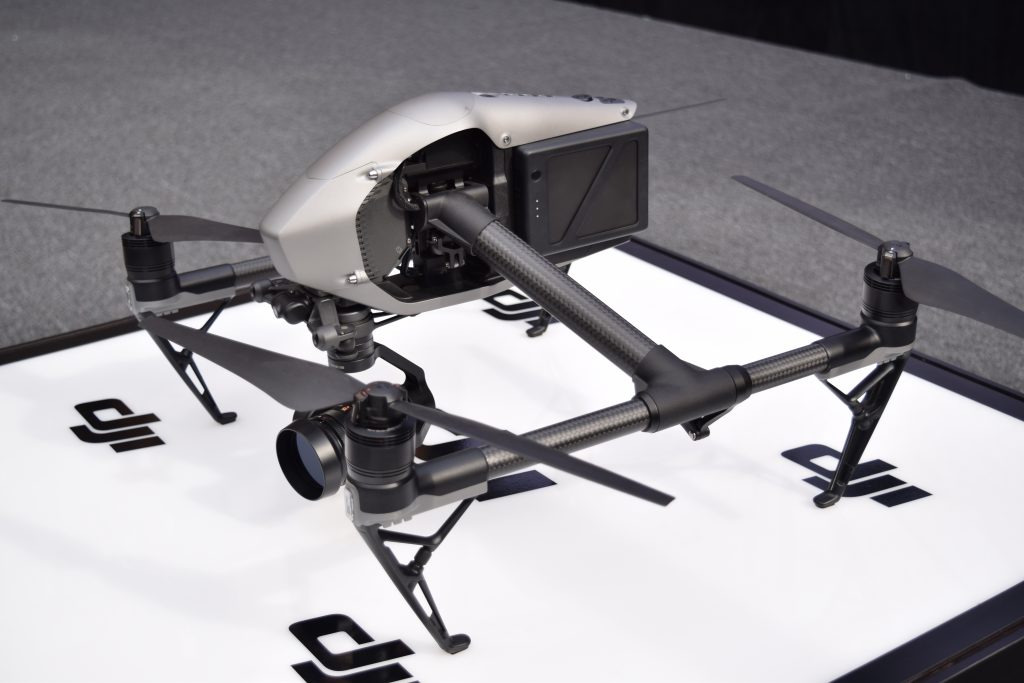
DJI piloted consumer drone production, and they are not letting up any time soon. While there are dozens of drone manufacturers on the market, there are none that can match the expertise DJI has built after years in the field. The recent failure of the GoPro Karma proves the point that quality aerial performance, design, and high end cinematography are not simply things that you wake up one morning and become good at. The most recent releases from DJI have raised the bar for consumer drone expectations…again.
